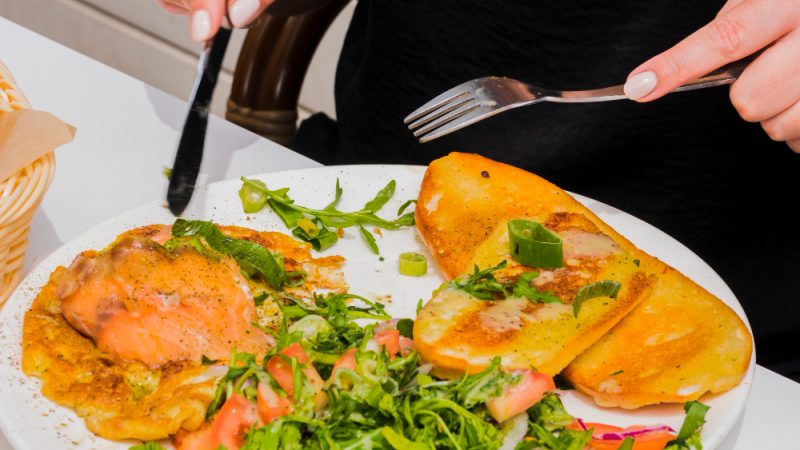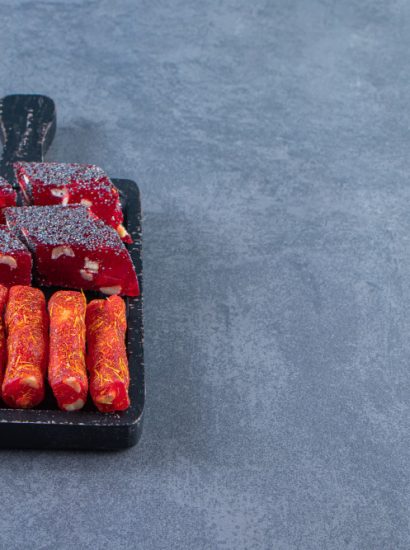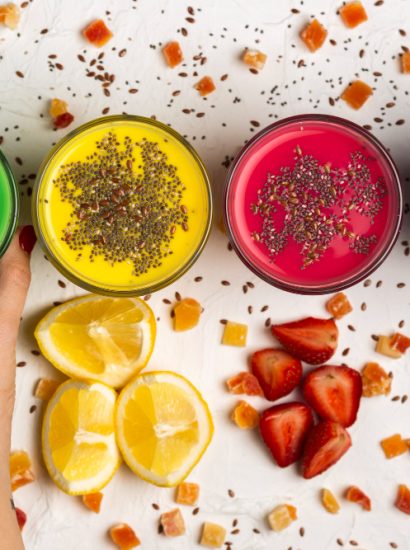Salmon is a versatile and nutritious fish that can be transformed into a gourmet meal with the right preparation. One of the most popular ways to cook salmon is with a herb crust, which adds a flavorful and crispy layer to this tender fish. However, achieving the perfect herb-crusted salmon can be tricky. To help you master this delicious dish, we’ve identified four common mistakes to avoid and provided tips to ensure your herb crusted salmon turns out perfectly every time.
1. Using the Wrong Type of Salmon
- When making herb crusted salmon, choosing the right type of salmon is crucial for a successful dish. The most common types of salmon are Atlantic, Chinook, Coho, and Sockeye, each with its unique flavor and texture.
- Atlantic Salmon: This is the most widely available type of salmon and has a rich, fatty flavor. It’s a good choice for herb crusted salmon as it holds up well during cooking and absorbs flavors beautifully.
- Chinook Salmon: Also known as King salmon, Chinook is prized for its high fat content and buttery texture. It’s an excellent choice for a luxurious herb crusted salmon dish.
- Coho Salmon: Coho has a milder flavor and lower fat content compared to Chinook. It can work well with a herb crust, but be mindful of overcooking, as it can become dry more quickly.
- Sockeye Salmon: Sockeye has a stronger flavor and firmer texture. It’s ideal for a herb crust, especially if you prefer a more pronounced fish taste.
- Ensure you choose high-quality, fresh salmon for the best results. Look for vibrant color and a firm texture, and avoid any with a fishy smell.
2. Not Properly Preparing the Herb Crust
- A well-prepared herb crust is the key to making an outstanding herb crusted salmon. The crust typically consists of a mixture of fresh herbs, breadcrumbs, and sometimes cheese. Here’s how to prepare it correctly:
- Use Fresh Herbs: Fresh herbs such as parsley, dill, thyme, and rosemary provide the best flavor. Dried herbs can be used in a pinch but won’t offer the same vibrancy.
- Balance Flavors: Combine herbs with other ingredients like garlic, lemon zest, and grated Parmesan cheese for a well-rounded flavor profile. Avoid over-seasoning, which can overpower the delicate taste of the salmon.
- Proper Texture: The herb crust should be coarse and slightly chunky, not a fine paste. The texture helps create a crispy coating when baked. Use a food processor to blend the herbs and other ingredients, but pulse it to maintain some texture.
- Application: Press the herb mixture firmly onto the salmon fillets to ensure it sticks well during cooking. A thin layer of Dijon mustard or olive oil on the fish can help the crust adhere better.
3. Overcooking the Salmon
- Overcooking is one of the most common mistakes when preparing herb crusted salmon. Proper cooking ensures the fish remains moist and tender while achieving a crispy crust. Here’s how to avoid overcooking:
- Use a Meat Thermometer: The most reliable way to check for doneness is using a meat thermometer. For salmon, the internal temperature should reach 145°F (63°C). Insert the thermometer into the thickest part of the fish for an accurate reading.
- Observe Cooking Time: Generally, herb crusted salmon should be baked at 400°F (200°C) for about 12-15 minutes, depending on the thickness of the fillets. Adjust cooking time accordingly if your fillets are thicker or thinner.
- Check for Flakiness: Another indicator of doneness is the texture of the salmon. It should easily flake with a fork but still be slightly translucent in the center. Avoid cooking until it is completely opaque, as this can lead to dryness.
- Rest the Salmon: Let the salmon rest for a few minutes after removing it from the oven. This allows the juices to redistribute, keeping the fish moist.
4. Not Using the Right Baking Technique
The baking technique can significantly impact the outcome of your herb crusted salmon. Here are some tips to ensure perfect baking:
Preheat the Oven: Always preheat your oven to the right temperature before baking. This ensures even cooking and helps the herb crust become crispy.
Use a Baking Sheet or Pan: Line a baking sheet with parchment paper or lightly grease it to prevent sticking. If you’re using a pan, ensure it’s oven-safe and preheated if possible.
Avoid Crowding: Arrange the salmon fillets with some space between them on the baking sheet. Crowding can lead to uneven cooking and a less crispy crust.
Broil for Extra Crispiness: If you desire an extra crispy crust, switch to the broil setting for the last 2-3 minutes of cooking. Keep a close eye on the salmon to prevent burning.
Conclusion
Achieving the perfect herb crusted salmon requires attention to detail and avoiding common mistakes. By choosing the right type of salmon, properly preparing the herb crust, avoiding overcooking, and using the correct baking technique, you can create a delicious and impressive meal. Whether you’re preparing a weeknight dinner or a special occasion feast, following these tips will help you master herb crusted salmon and impress your guests with a flavorful, crispy, and perfectly cooked dish.
FAQs
1. Can I use dried herbs instead of fresh for the herb crust?
While fresh herbs are preferred for their vibrant flavor, dried herbs can be used if fresh ones are not available. Use about one-third of the amount of dried herbs compared to fresh.
2. How can I make a gluten-free herb crust for salmon?
To make a gluten-free herb crust, substitute regular breadcrumbs with gluten-free breadcrumbs or almond flour. Ensure all other ingredients are also gluten-free.
3. Can I prepare the herb crust in advance?
Yes, you can prepare the herb crust mixture in advance and store it in an airtight container in the refrigerator for up to 2 days. Apply it to the salmon just before baking.
4. What side dishes pair well with herb crusted salmon?
Herb crusted salmon pairs well with a variety of side dishes such as roasted vegetables, quinoa, mashed potatoes, or a fresh green salad.
5. How do I store leftover herb crusted salmon?
Store leftover herb crusted salmon in an airtight container in the refrigerator for up to 3 days. Reheat gently in the oven to maintain the crispiness of the crust.
Also read : BANFF NATIONAL PARK FIRE: 10 INSPIRATIONAL STORIES OF HEROISM AND HOPE









